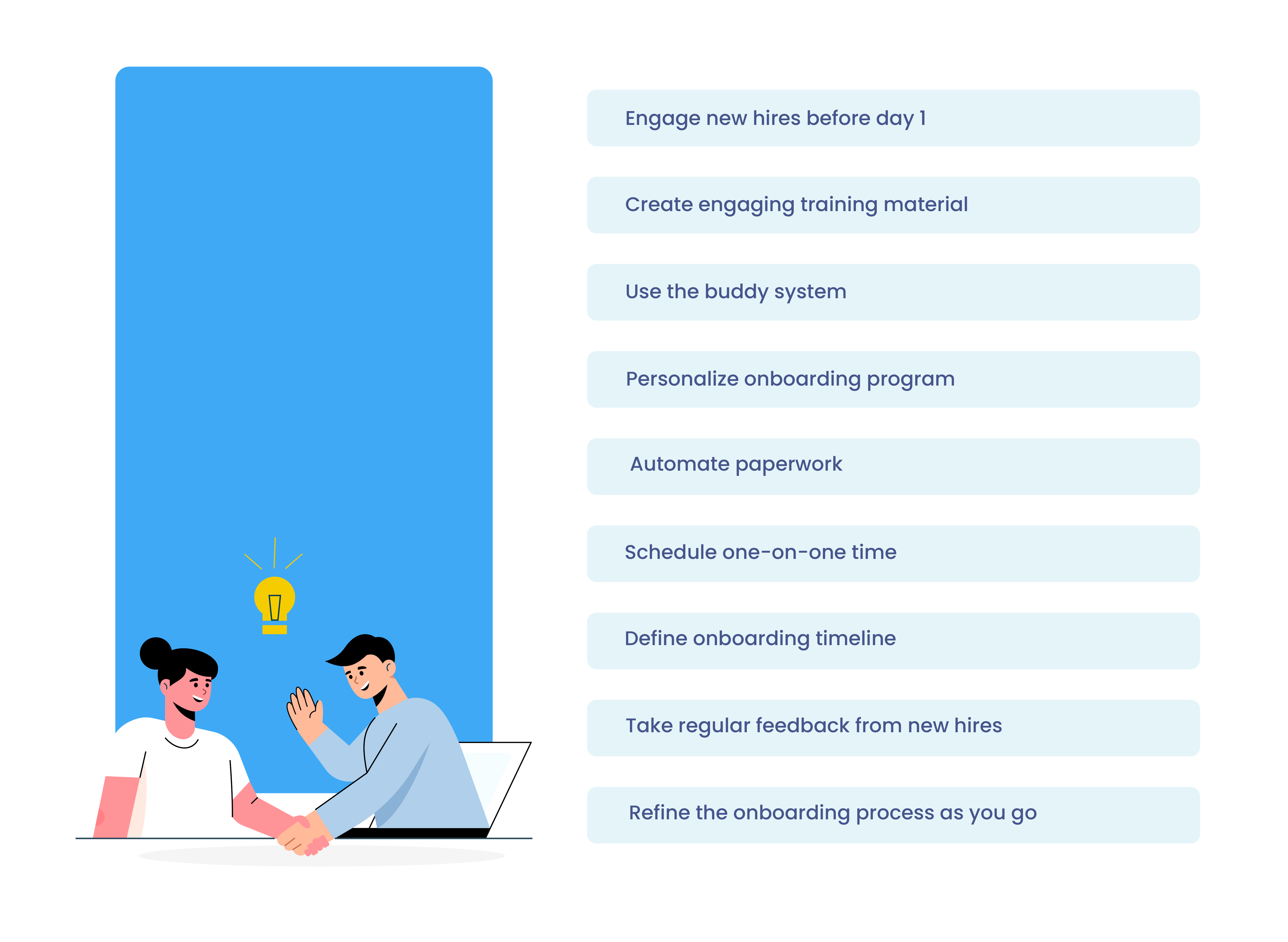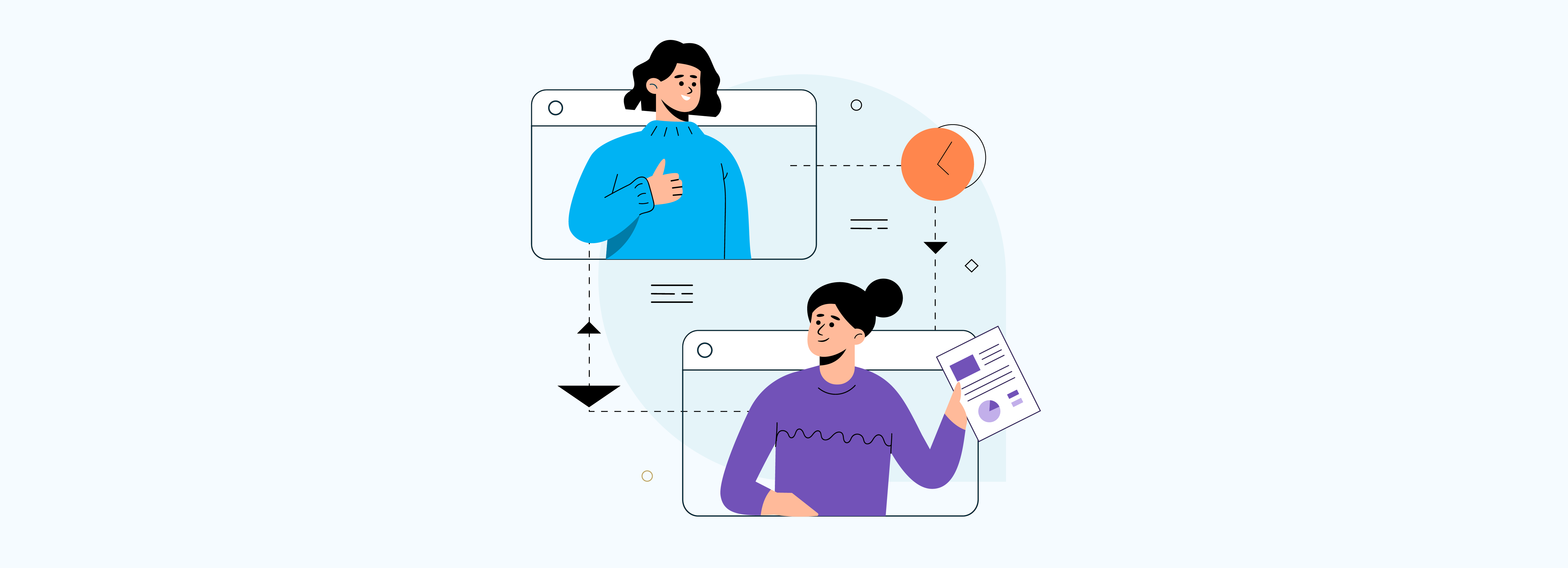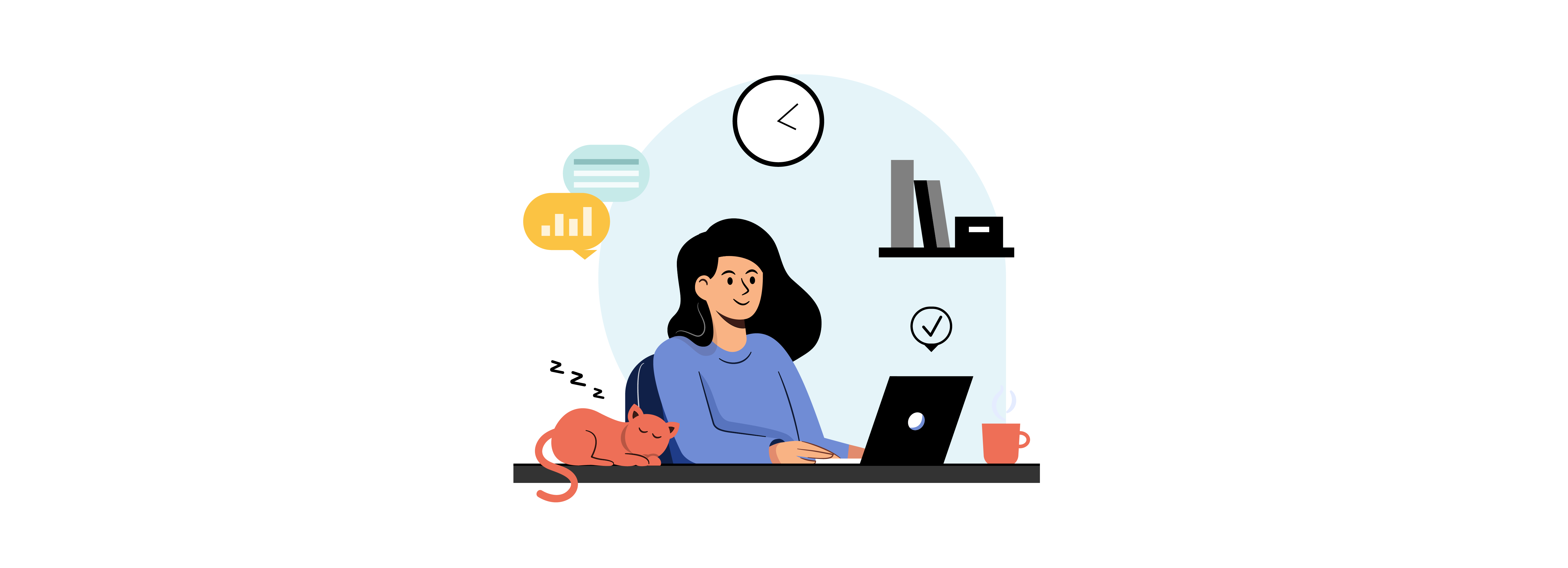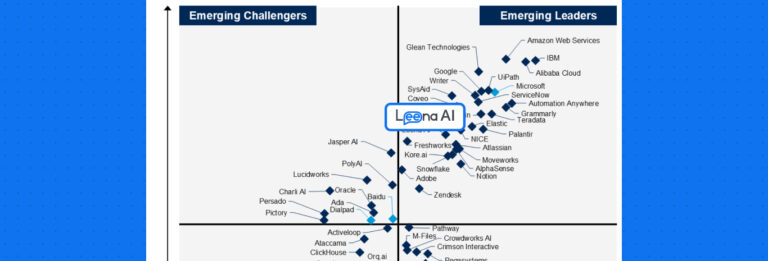Change, as often as it may occur, is not always welcome with open arms or accepted easily. There is always a certain amount of apprehension, hesitation, or even resistance involved, especially with employee onboarding programs.
Organizations need to fathom that their traditional or in-person onboarding programs cannot prevail anymore given that remote and hybrid workplace flexibility has become a barometer for potential candidates eyeing new job opportunities.
The conventional in-person onboarding process is no more relevant for acclimating new employees to a company and its culture when teams work across different geographies and are seldom together. It leaves organizations with the best possible option of overhauling their existing employee onboarding program to create a meaningful, welcoming, and inclusive moment that prepares remote and hybrid workforce for their future in the organization.
That is why we have brought together some of the effective remote and hybrid onboarding techniques and a list of tech tools that you can embrace to ensure that your workforce assimilates swiftly into your organization from the outset and deliver the desired results.
Tips for onboarding remote and hybrid employees

Good preboarding to keep new hires engaged
As soon as candidates accept the offer letter, HRs should start laying the groundwork for new hires to help them assimilate into the new workplace easily and quickly. While preboarding might seem an ordinary administrative task, overlooking this essential step can jeopardize the first-day experience of your new hire, especially when they work in remote or hybrid environments.
To avoid such instances, HR teams should streamline the preboarding process across teams and departments, including HR, IT, legal, facilities, and procurement. Hybrid work environments require even more cross-departmental coordination due to new hires’ unique work parameters and locations. This shared context eliminates administrative confusion and ensures new hires have what they need and where they need it, before day one.
HR teams can deploy an integrated HR service management system (IHRSM) to complete the rote tasks, such as sending the offer letters, getting the documents e-signed by new hires, and automating the entire paperwork process. Further, as new hires work in remote or hybrid environments, HRs need to ensure that they are equipped with the right resources and tools to complete their tasks. It can include a laptop, mouse, headphones, desk, chair, wireless booster for poor signal, et al., as well as documentation, information packages, and a brief of what to expect during their onboarding process.
Suggested Action: Focus on clear communication as it instills a sense of belonging in the new hires even if they cannot be physically present.
Let a buddy be new hires’ go-to-person
Employees cannot spontaneously approach their colleagues for their queries or assistance in a remote work setup. Having a seasoned employee proactively reaching out to the new hires as their go-to person can put them at ease while establishing an informal mentor relationship.
Assigning a buddy is a simple step to take, but it is worth doing ahead of time, especially for remote hires. HRs should give buddies the opportunity and flexibility to adequately welcome new hires. It can include scheduling regular virtual check-in calls, organizing remote lunch, facilitating internal networking and team building, and an invitation to remote happy hours.
While the assigned buddy would provide psychological safety to new hires, they would also instill a sense of pride and loyalty in them.
HRs can use remote onboarding software to automate assigning buddies to new hires rather than manually sifting through the names of different buddies in the organization. An AI-driven onboarding software matches new remote hires with a buddy of similar interests and personality. It helps new hires mingle easily with their buddy and acclimate within the organization.
Personalization is the key
All employees, irrespective of their level or status, require some sort of onboarding process to get a download of the organization’s culture, rules, and guidelines. However, the process needs to be modified to meet the differing needs of various groups of employees. What organizations can do is tailor the onboarding program to meet the expectations of new hires. Managers and departments should create custom plans that monitor progress, deliver training, and schedule events for new hires with colleagues, to keep them engaged regardless of where they are working.
If organizations don’t focus on personalization, remote hires might end up sifting through irrelevant information. They might also feel overwhelmed with information overload and may get connected to the wrong people for a particular stage in their onboarding journey.
New hires expect organizations to provide them with relevant information in multiple formats at the right time. And the more organizations cater to that, the better their (new hires) experience will be and the probability of long association with the organization.
Besides, a collaborative, engaging, and tailored employee onboarding program boosts the productivity, performance, and engagement levels of new hires. Organizations can even conduct surveys to ask remote hires about their onboarding experience and make the process more personalized.
Better synchronization among departments for higher efficiency
A flexible hybrid workplace has become a cornerstone for organizations to move forward. Still, there are some growing unaddressed challenges for HRs to overcome. The most difficult is a remote collaboration with other departments for onboarding remote and hybrid employees.
HRs constantly reach out to team leaders, buddies, and people from IT and finance, to name a few, for processing the onboarding formalities of remote and hybrid employees. Still, if a lag or miscommunication happens, it breaks new hires’ onboarding experience right there!
So, instead of dreading such instances, organizations should empower HRs with AI-driven employee onboarding tools. The automated onboarding tools free up HRs’ time from unnecessary follow-ups across departments. The AI-powered virtual assistant sends timely reminders and task notifications to everyone accountable for onboarding new hires, thereby eliminating delays and errors.
Share important documents and information
Expecting new employees to absorb all the company-related information on their first day is unrealistic. HRs should rather give new hires access to critical data and documents related to the organization slowly and gradually in their remote onboarding journey.
To streamline this process, enterprises can leverage AI-powered knowledge management solutions for storing all information within it. It can include training material, company policies, organization hierarchy, remote employee onboarding checklist, etc.
Suggested Action: Give role-based access to both HRs and employees for quick access, edits, and retrieval of information. Look for a cloud-based system to ensure security from unauthorized access, provide information anytime-anywhere, and improve efficiency.
Take onboarding feedback from employees
Since the majority of the employees are opting for remote or hybrid work, enterprises, even the most experienced and organized ones, are facing bumps in refining their onboarding process as per the new working environment. It is because organizations perceive their onboarding practices as correct. But in reality, those practices do not translate into the best experience for employees. It generally happens when organizations do not communicate and understand the needs of their employees.
Organizations can course-correct themselves by carefully evaluating their efforts and identifying areas for improvement in the remote onboarding process. They can collect employee feedback via automated polls and surveys to get real-time insights. Doing so can help organizations spot issues before they derail the process and ruin the experience for future remote hires.
Suggested Action: Include a question to learn whether the respondent works remotely or in a hybrid fashion. It will help you segment your data and comprehend what different groups of employees think of your employee onboarding program. HRs can then fine-tune their onboarding experiences for both types of employee groups.
Performance management demands diligent efforts from managers and HRs
Performance management is an ongoing process. It requires managers and HRs to collaborate and facilitate constant performance conversations with new hires. This way, new hires get a clear understanding of what success looks like for the first hundred days and beyond.
These conversations become even more critical in a remote setup. Since there is minimal possibility of face-to-face interactions for resolving queries of new hires, managers should lay out a plan for regular performance check-ins and share big-league communications and presentations done by the leadership of the organization. It gives new hires a comprehensive view of the organization’s goals and an understanding of how their goals and responsibilities fit into the overall success of the company.
Given this, new hires feel empowered to prioritize and sequence work and accomplish such quick wins that create a strong foundation and momentum for an individual’s future success. Over the long term, while a role evolves, adapts, and becomes more complex and ambiguous, having clarity from the start sets the groundwork from which the remote hire can more effectively adapt and foresee potential roadblocks more easily.
Leverage the right technology
Remote work requires HRs to embrace digital transformation across all the aspects of HR service delivery. From managing new hires’ preboarding and remote onboarding to offboarding, businesses must now leverage an AI-powered HR service delivery suite to automate and digitize their processes.
Leveraging the right technology saves HRs from redundant processes and ensures a consistent experience for all new hires. A structured and automated onboarding process facilitates new hires to spend more time connecting with their team rather than feeling bogged down in piles of paperwork.
Investing in a modern and AI-driven HR solution that helps in humanizing the remote onboarding experience is beneficial for both remote and hybrid employees as it assists the new hires to engage with the culture, connect with their team, and feel supported.
What tech stack do you need for streamlining remote and hybrid onboarding?

Deploying your dream tech stack is a tedious task. You might come across several tools, but hardly any software will tick every checkbox from your requirements list.
However, some tools and software will catch your eye because they are crafted meticulously to solve particular problems. That is when you can combine HR tools and platforms to create your dream HR tech stack. Here is the breakdown of software you need for a robust tech stack:
Integrated HR management system (IHRMS)
Pain point: Lack of a centralized platform and negligible automation hampers EX
HRs do not have a centralized platform for managing employees’ requests. They have to manually run the administrative process. As a result, HRs deliver wretched experiences to new hires and their productivity gets impacted.
How Leena AI’s HR service delivery suite helps:
Leena AI’s HR service delivery suite enhances employee experience across their lifecycle in the organization. From preboarding and onboarding to transitions and offboarding, the AI-driven platform aims at saving HR time by automating the tasks and resolving 90% of the queries automatically. This allows the HRs to spend more time with the employees across different touchpoints and channels.
Onboarding solution
Pain point: Endless paperwork does not let HRs focus on the onboarding experience of new hires
HRs are bogged down with endless paperwork and administrative tasks during the remote onboarding process while trying to ensure new employees are engaged. Connecting with the HR management service system and employee engagement platforms further adds to the complexity of the overall onboarding process.
How Leena AI’s onboarding solution helps:
Leena AI’s employee onboarding solution helps HR leaders automate the entire onboarding process from releasing offer letters to completing documentation, initiating background checks, sharing learning and training material, assigning an onboarding buddy, and asset allocation. Its seamless integration capabilities facilitate new hires to connect with HRs across any channel of their preference, raise tickets, and learn about HR policies and the company. HRs can also roll out pulse surveys to understand new hires’ onboarding experiences and address gaps, if any.
Employee engagement
Pain point: No dashboard to collect and analyze employee feedback on engagement
HRs need an effective platform for collecting and evaluating remote employee feedback and engagement levels to take the necessary action at the right time before it increases the turnover rates or drop-offs. HRs also cannot analyze the effectiveness of onboarding and training delivered, and the engagement levels of new employees.
How Leena AI’s Employee Engagement solution helps:
Leena AI’s employee engagement solution enables HRs to send feedback surveys to the remote and hybrid workforce at regular and specified intervals, analyze their responses, and use the AI-driven insights to set goals for improving employee engagement levels and performance.
Our AI-driven platform also evaluates the pulse of employees who might feel disconnected or alienated while working remotely. This way HRs and organizations even out kinks in the remote onboarding process before it becomes a massive problem.
Document sharing software
Pain point: Manually managing documents leads to inefficiencies
HR departments manage the sheer volume of documents while onboarding new employees remotely. The bigger the company, the more data to manage. HRs lose track of employee documents as they are often stored in more than one place. Add to it, that new hires do not have any means to access and update their documents, as and when required.
How Leena AI’s document management system helps:
Leena AI’s document management system enables HRs to manage all the documents of new hires in an organized manner. HRs can collaborate with remote and hybrid employees to get all the documents signed digitally without overwhelming and bugging them constantly during their onboarding process. Our cloud-based document management solution gives HRs centralized, secure and swift access to edit, update, store, and retrieve the documents seamlessly whenever they want.
Are you ready to upgrade your onboarding program for remote and hybrid employees?

Your organization might have started working remotely out of necessity but today, it has become a norm. While your new hires might have mixed feelings about starting a new job in a remote or hybrid environment, they should not have doubt about how their new employer supports them.
So, empower your HRs to onboard remote employees with a smart, structured onboarding program that sets them up for success no matter where they choose to work from. Done well, it creates momentum for new hires, gives them unambiguous goals, acquaints them to the culture, and increases productivity.
But structured onboarding requires a structured system first. Relying on robust technology and work processes can help organizations drive through the turbulence and continue on their way.
Introducing an AI-driven remote onboarding process would be an added advantage for all times because once we are on the other side of the pandemic, the hybrid workforce will continue to exist indefinitely. So, making the necessary adjustments will help companies onboard new hires effectively.
Leena AI’s carefully curated HR service delivery suite and onboarding solutions can jump-start your journey towards technology-backed, employee-driven experiences. Let’s talk more about this.






